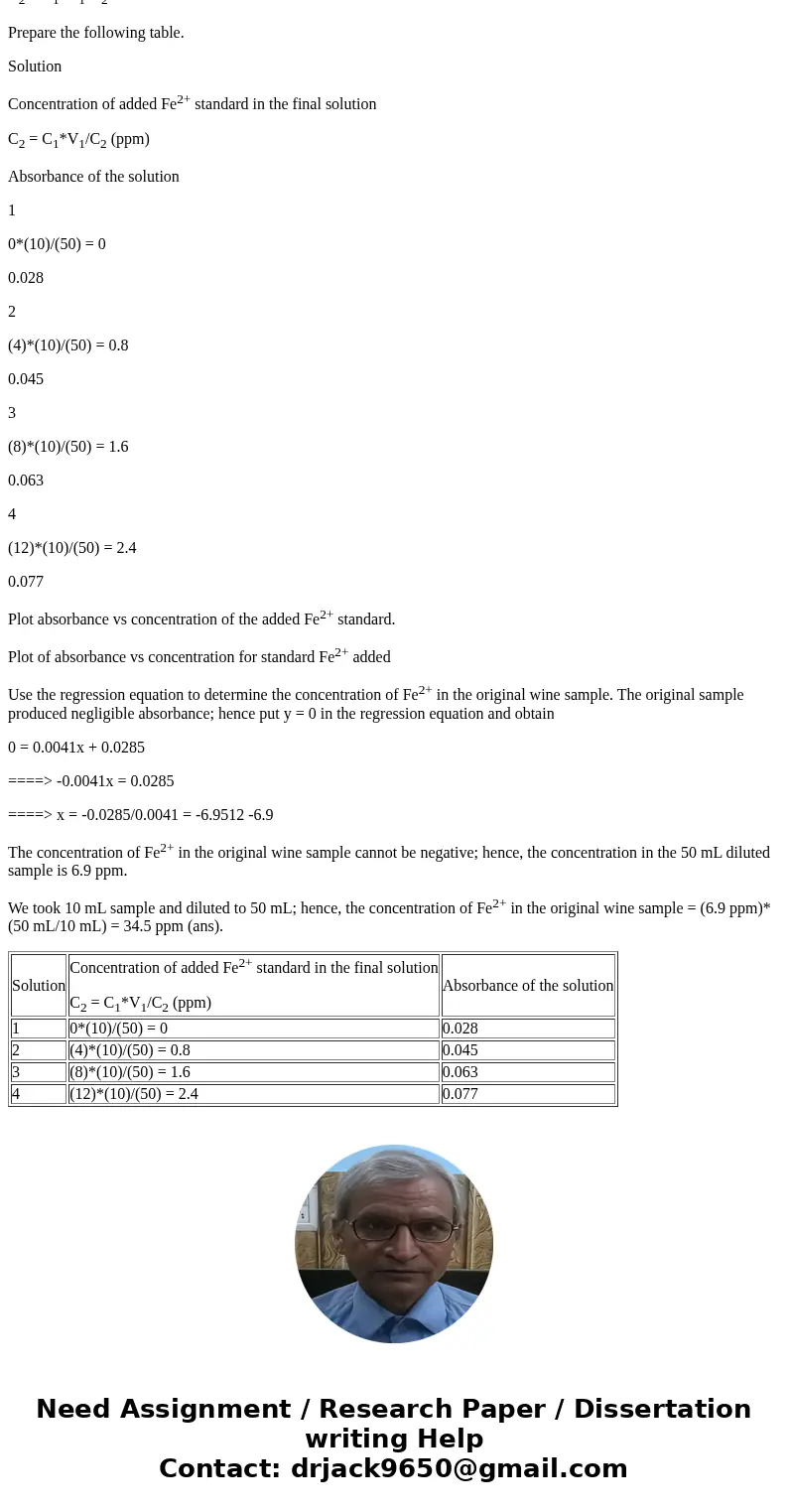To determine the iron concentration in a California Burgundy
Solution
3) Use the dilution equation to find the concentrations of the added Fe2+ standard in the 50 mL beakers. The dilution equation is
C1*V1 = C2*V2
where C1 = concentration of stock Fe2+ added in ppm; V1 = volume of stock Fe2+ added = 10 mL; V2 = final volume of the solutions = 50 mL and C2 = concentration of the added Fe2+ in the final solution. Therefore,
C2 = C1*V1/V2
Prepare the following table.
Solution
Concentration of added Fe2+ standard in the final solution
C2 = C1*V1/C2 (ppm)
Absorbance of the solution
1
0*(10)/(50) = 0
0.028
2
(4)*(10)/(50) = 0.8
0.045
3
(8)*(10)/(50) = 1.6
0.063
4
(12)*(10)/(50) = 2.4
0.077
Plot absorbance vs concentration of the added Fe2+ standard.
Plot of absorbance vs concentration for standard Fe2+ added
Use the regression equation to determine the concentration of Fe2+ in the original wine sample. The original sample produced negligible absorbance; hence put y = 0 in the regression equation and obtain
0 = 0.0041x + 0.0285
====> -0.0041x = 0.0285
====> x = -0.0285/0.0041 = -6.9512 -6.9
The concentration of Fe2+ in the original wine sample cannot be negative; hence, the concentration in the 50 mL diluted sample is 6.9 ppm.
We took 10 mL sample and diluted to 50 mL; hence, the concentration of Fe2+ in the original wine sample = (6.9 ppm)*(50 mL/10 mL) = 34.5 ppm (ans).
| Solution | Concentration of added Fe2+ standard in the final solution C2 = C1*V1/C2 (ppm) | Absorbance of the solution |
| 1 | 0*(10)/(50) = 0 | 0.028 |
| 2 | (4)*(10)/(50) = 0.8 | 0.045 |
| 3 | (8)*(10)/(50) = 1.6 | 0.063 |
| 4 | (12)*(10)/(50) = 2.4 | 0.077 |


 Homework Sourse
Homework Sourse